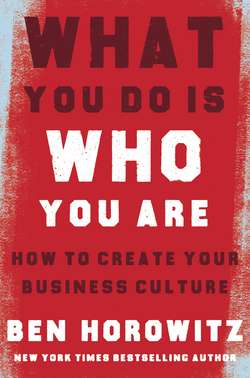Читать книгу What You Do Is Who You Are: How to Create Your Business Culture - Бен Хоровиц, Ben Horowitz - Страница 27
DRESS FOR SUCCESS
ОглавлениеWhen Mary Barra took over as the CEO of General Motors in 2014, she wanted to dismantle the company’s powerful bureaucracy. It stifled employees and disempowered managers: rather than communicating with employees and giving them guidance, the managers relied on the extensive system of rules to do the job for them. The ten-page dress code was the worst example. To shock the system and change the culture, Barra reduced ten pages to two words: dress appropriately.
She told the story at the Wharton People Analytics Conference:
The HR department started arguing with me, saying, it can be “Dress appropriately” on the surface, but in the employee manual it needs to be a lot more detailed. They put in specifics like, “Don’t wear T-shirts that say inappropriate things, or statements that could be misinterpreted.”
Barra was perplexed.
“What does inappropriate, in the context of a T-shirt, even mean?” she asked the audience, half-jokingly.
So I finally had to say, “No, it’s two words, that’s what I want.” What followed was really a window into the company for me.
Barra promptly received an email from a senior-level director:
He said, “You need to put out a better dress policy, this is not enough.” So I called him—and of course that shook him a little bit. And I asked him to help me understand why the policy was inept.
The director explained that some people on his team occasionally had to deal with government officials on short notice, and they needed to be dressed appropriately for that.
“Okay, why don’t you talk to your team,” I replied. He was an established leader at GM, responsible for a pretty important part of the company, with a multimillion-dollar budget. He called me back a few minutes later, saying, “I talked to the team, we brainstormed, and we agreed that the four people who occasionally need to meet with government officials will keep a pair of dress pants in their locker.” Problem solved.
The change sent a lasting visual message to GM’s entire management team. Every time a manager saw an employee, it would trigger the thought, Is he dressed appropriately? And, if not, What’s the best way for me to manage that? Do I have a good enough relationship with him to communicate effectively on this sensitive issue? The new code empowered—and required—managers to manage.
When Michael Ovitz ran Creative Artists Agency, Hollywood’s leading talent agency, he, too, had no explicit dress code. But he absolutely had an implicit one. “In the mid-seventies, we lived in a world coming off sixties culture, where everyone wore jeans and T-shirts,” Ovitz recalled. “That’s what I needed to counter-program.” The dress code he landed on came from the culture of authority he sought: “If you walk into the room wearing an elegant dark suit, you pick up unbelievable positioning power. If you want respect, carry yourself in a way that commands it.”
Ovitz wore elegant dark suits every day, leading by example. He never explicitly asked anyone to follow his lead. That didn’t mean there weren’t consequences if you didn’t. “There was a downpour in LA, and some people came in in rain boots and jeans. I went up to one agent and said, ‘Nice outfit. Are you working on set today?’ And that rattled through our business.” Ovitz was giving him the hip-hop ultimatum: Are you a hustler or a customer? Are you a world-class agent or a wannabe actor? This steely but largely unspoken approach soon shifted CAA to nearly complete dress code compliance. “The only exception was our music department, because musicians don’t like guys in suits.”
The results of the code on the culture were profound:
It became part of our ethos: we were classy, elegant, conservative businesspeople. It spoke to everything we wanted to be without our having to say it out loud. Through our culture we built our business to a place where people respected it due to the culture itself.
How you dress, the most visible thing you do, can be the most important invisible force driving your organization’s behavior. Ovitz sums it up: “Cultures are shaped more by the invisible than the visible. They are willed.”
